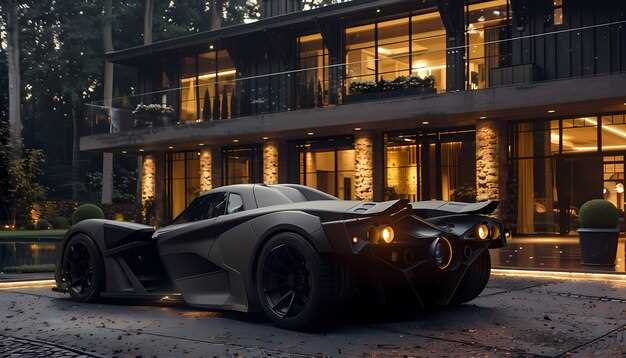
The world of hypercars is a breathtaking realm where engineering excellence, cutting-edge technology, and unparalleled performance converge. Two brands that epitomize this excellence are Koenigsegg and Bugatti, each representing the pinnacle of automotive innovation and luxury. Their vehicles not only push the boundaries of speed but also redefine what it means to be a hypercar.
In this comprehensive comparison, we delve into the strengths and nuances of Koenigsegg and Bugatti. From the meticulous craftsmanship found in Koenigsegg’s bespoke designs to Bugatti’s illustrious history of speed records, both manufacturers showcase their unique philosophies in hypercar development. With their iconic models such as the Koenigsegg Jesko and the Bugatti Chiron, car enthusiasts are presented with a fascinating study in contrasts.
We will examine key aspects such as performance metrics, technological advancements, and design philosophies. Moreover, by considering factors like price and exclusivity, we aim to uncover which of these titans truly deserves the title of the ultimate hypercar manufacturer in today’s rapidly evolving automotive landscape. Join us as we pit Koenigsegg against Bugatti in a battle that promises to be as thrilling as the vehicles themselves.
Koenigsegg vs Bugatti: A Hypercar Comparison

When it comes to the pinnacle of automotive engineering, the competition between Koenigsegg and Bugatti represents the ultimate battle in the hypercar segment. Both brands have a storied history of pushing the boundaries of speed, design, and technology, leading to distinct identities within the hypercar landscape.
Koenigsegg is known for its innovative approach to performance and engineering finesse. With models like the Jesko and Agera RS, Koenigsegg has introduced cutting-edge technologies such as the Freevalve system, which allows for more precise control of the engine’s performance. This results in remarkably high horsepower figures while maintaining efficiency. The brand often focuses on lightweight construction, employing carbon fiber extensively to enhance speed and handling.
On the other hand, Bugatti stands as a symbol of luxury and performance, famously known for the Veyron and the Chiron. Bugatti vehicles are characterized by their flamboyant design and unparalleled attention to detail. Equipped with an impressive W16 engine, Bugatti hypercars deliver astonishing power and torque. The brand maintains a commitment to achieving top speed records, setting benchmarks that few can aspire to reach.
Performance metrics are a crucial area where both brands shine. Koenigsegg hypercars have repeatedly broken acceleration and speed records, emphasizing their engineering prowess. Meanwhile, Bugatti emphasizes a balance of raw power and everyday drivability, making their hypercars suitable for both track and road use. This balance has contributed to Bugatti’s appeal, offering exclusivity and luxury alongside performance.
Ultimately, the choice between Koenigsegg and Bugatti often comes down to personal preference. Enthusiasts may lean towards Koenigsegg for its revolutionary technology and lightness, whereas others might prefer Bugatti for its impressive heritage and luxurious experience. Each brand contributes uniquely to the hypercar world, offering a blend of innovation, speed, and prestige.
Performance Metrics: Comparing Speed and Acceleration
When discussing hypercars, performance metrics such as speed and acceleration play a crucial role in defining a brand’s supremacy. Both Koenigsegg and Bugatti have established themselves as leaders in this domain. Let’s delve into the specifics of their performance capabilities.
Koenigsegg models are renowned for their incredible acceleration and top speeds, primarily due to their advanced engineering and lightweight designs. Below are some highlights that showcase Koenigsegg’s performance metrics:
- Koenigsegg Jesko Absolut: This model boasts a remarkable top speed of over 300 mph (483 km/h), confirmed through extensive testing.
- Acceleration: The Jesko Absolut can go from 0 to 60 mph (0 to 97 km/h) in just about 2.5 seconds, powered by a twin-turbo V8 engine that produces 1,600 horsepower.
- Weight-to-Power Ratio: With a lightweight design, its weight-to-power ratio is among the best in the industry, enhancing both speed and acceleration potential.
In comparison, Bugatti hypercars are also known for their phenomenal performance. Consider the following metrics:
- Bugatti Chiron Super Sport 300+: This model has reached a top speed of 304 mph (490 km/h), making it one of the fastest production cars ever.
- Acceleration: The Chiron achieves 0 to 60 mph (0 to 97 km/h) in approximately 2.4 seconds, utilizing an 8.0-liter quad-turbo W16 engine with 1,577 horsepower.
- Aerodynamics: Bugatti’s attention to aerodynamics contributes to their performance, allowing for stable high-speed runs.
Both Koenigsegg and Bugatti have distinct strengths that contribute to their performance metrics:
- Engineering Innovation: Koenigsegg employs unique technologies, such as Freevalve systems and lightweight carbon fiber structures, enhancing speed and acceleration.
- Continuous Improvement: Bugatti focuses on refining its legendary W16 engine and aerodynamic properties for maximum performance.
- Real-World Testing: Both brands engage in rigorous real-world testing to validate their claims of speed and acceleration.
In summary, Koenigsegg and Bugatti represent the pinnacle of hypercar performance. While Koenigsegg continues to push boundaries with groundbreaking innovation, Bugatti remains a symbol of speed and luxury. Ultimately, the choice between these two titans depends on personal preference and the specific traits that resonate with enthusiasts.
Design Philosophy: Engineering and Aesthetics of Hypercars
The design philosophy of hypercars like Koenigsegg and Bugatti merges cutting-edge engineering with striking aesthetics, creating machines that are not only high-performance vehicles but also works of art. Koenigsegg emphasizes a minimalist approach, with a focus on aerodynamics and lightweight materials, enabling greater speeds and efficiency. Their design features, such as the dihedral synchro-helix doors and streamlined body shapes, are not just for visual appeal but serve critical aerodynamic functions, enhancing performance at high speeds.
Bugatti, on the other hand, embodies a more classic luxury aesthetic, prioritizing an impressive presence on the road while maintaining exceptional performance. The company’s designs often include a blend of smooth curves and aggressive lines, reflecting elegance alongside power. The iconic horseshoe grille and the signature C-line accentuate the Bugatti brand, ensuring that their hypercars stand out in any setting.
Both brands utilize advanced materials in their designs. Koenigsegg often incorporates carbon fiber and lightweight alloys, resulting in a significantly reduced weight that optimizes speed. Additionally, their focus on engineering innovation is evident in features like the freevalve technology, providing precise control of the intake and exhaust for maximum performance. Bugatti similarly employs advanced materials, including carbon fiber and aluminum, while also integrating luxurious details that elevate the overall experience of their vehicles.
In terms of performance, the engineering behind the design is equally crucial. Koenigsegg’s commitment to pushing the boundaries of technology reflects in their engine configurations and horsepower capabilities, creating cars that redefine speed. Bugatti’s approach combines a powerful quad-turbocharged W16 engine with sophisticated aerodynamics to achieve blistering acceleration and an unparalleled top speed.
Ultimately, the design philosophy of these hypercars represents a harmonious balance between form and function. While Koenigsegg illustrates a futuristic and functional aesthetic, Bugatti captures a timeless luxury appeal, showcasing the diverse interpretations of what hypercar design can encapsulate. The result is a lineage of breathtaking machines, each with its unique identity, yet united in the pursuit of engineering excellence and aesthetic perfection.
Ownership Experience: Maintenance, Exclusivity, and Cost

Owning a hypercar like a Bugatti or a Koenigsegg is not just about driving an exceptional machine; it encompasses a unique lifestyle characterized by maintenance, exclusivity, and high costs. Both manufacturers offer a distinct ownership experience that reflects their brand ethos and engineering excellence.
Maintenance for these hypercars is an essential consideration. Bugatti vehicles, renowned for their cutting-edge engineering, often require specialized service. The availability of trained technicians and Genuine Bugatti Parts is crucial for maintaining performance and reliability. Scheduled maintenance can be extensive, involving checks on the complex drivetrain and electronics, which can lead to significant costs. In contrast, Koenigsegg focuses on accessibility; their models are engineered to be easier to maintain, with much of the technology designed for longevity and user-friendly upkeep.
The exclusivity of ownership plays a vital role in the allure of both brands. Bugatti, with its rich history and limited production runs, signifies a status symbol that is recognized worldwide. Owning a Bugatti offers not just a vehicle, but a ticket into a prestigious community of enthusiasts and collectors. Koenigsegg, while also exclusive, emphasizes innovation and personal connection. Each car is often tailored to the buyer’s specifications, creating a unique bond between the owner and the vehicle.
When it comes to cost, both brands command a premium. The purchase price of a Bugatti is often several million dollars, reflecting its status and engineering prowess. Owners must also budget for insurance, taxes, and depreciation, which can be substantial. Koenigsegg, while slightly more accessible in terms of base price, still requires a significant investment. Additionally, the cost per mile in maintenance and service should be anticipated to ensure the longevity of the investment.
Ultimately, the ownership experience of both Bugatti and Koenigsegg encompasses not just the thrill of driving, but also a commitment to maintaining an extraordinary vehicle that embodies luxury and performance.




